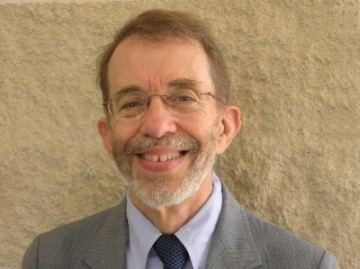Name Harry Swinney | Role Physicist | |
 | ||
Awards Guggenheim Fellowship for Natural Sciences, US & Canada | ||
Professor harry swinney saved by inertia
Harry L. Swinney (born April 10, 1939) is an American physicist noted for his contributions to the field of nonlinear dynamics.
Contents
- Professor harry swinney saved by inertia
- Distinguished speaker harry swinney
- Personal life
- Education
- Career
- Honors
- Research contributions
- Other
- References
Distinguished speaker harry swinney
Personal life
Harry Leonard Swinney was born in Opelousas, Louisiana, on April 10, 1939. His parents were Leonard R. Swinney and Ethel Bertheaud Swinney. In 1967 Harry Swinney married Gloria T. Luyas, and in 1978 they had a son, Brent Luyas Swinney. Brent died of cancer in 1995 and Gloria died of cancer in 1997. Harry Swinney married Lizabeth Kelley on August 12, 2000.
Education
Swinney attended elementary school in Austin, Texas, and in 1957 graduated from Homer Louisiana High School. In 1961 he was awarded a B.S. with honors in physics by Southwestern at Memphis (now Rhodes College), where he was inspired by his physics professor and research mentor, Jack H. Taylor. In 1968 he was awarded a Ph.D. in physics by Johns Hopkins University; his advisor was Herman Z. Cummins.
Career
Swinney was an assistant professor of physics at New York University (1971–73) and was associate professor and then professor at the City College of the City University of New York (1973–78). Since 1978 Swinney has been on the faculty of the University of Texas at Austin, where he is now Sid W. Richardson Foundation Regents Chair of Physics and director of the Center for Nonlinear Dynamics.
Honors
Swinney is a member of the National Academy of Sciences (1992) and a fellow of the American Physical Society (1977), the American Academy of Arts and Sciences (1991), the American Association for the Advancement of Science (1999), and the Society for Industrial and Applied Mathematics (2009). He was awarded the American Physical Society Fluid Dynamics Prize (1995), the Society for Industrial and Applied Mathematics Jürgen Moser Prize (2007), the European Geosciences Union Richardson Medal (2012), and the Boltzmann Medal (2013) of the Commission on Statistical Physics of the International Union of Pure and Applied Physics. He was a Guggenheim Fellow (1983–84) and he was inducted into The Johns Hopkins University Society of Scholars (1984). He was awarded honorary doctoral degrees by Rhodes College (2002), The Hebrew University of Jerusalem (2008), and the University of Buenos Aires (2010).
Research contributions
Swinney conducts research on instabilities, chaos, and pattern formation in diverse systems, including fluid, chemical, and granular media. Swinney together with his students, postdocs, and other collaborators have:
Other
Swinney, together with Rajarshi Roy and Kenneth Showalter, founded a two-week Hands-On Research School for early career scientists from developing countries: handsonresearch.org. The schools, sponsored by the International Centre for Theoretical Physics, are described in a 3-minute video here.
